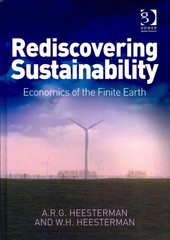Question
A. Considering only the household sector, an economy will: Select one: a.expand as spending from transfers and borrowing, and savings and taxes increase. b.contract as
A. Considering only the household sector, an economy will:
Select one:
a.expand as spending from transfers and borrowing, and savings and taxes increase.
b.contract as spending from transfers and borrowing, and savings and taxes increase.
c.expand as spending from transfers and borrowing increases, and contract as savings and taxes increase.
d.contract as spending from transfers and borrowing increases, and expand as savings and taxes increase.
B. Expectations of an economic downturn will most likely produce a recession if businesses:
Select one:
a.reduce investment spending and households reduce their saving.
b.reduce investment spending and households increase their saving.
c.increase investment spending and households reduce their saving.
d.increase investment spending and households increase their saving.
C. Government intervention during the recovery phase of a business cycle is designed to minimize the effects of:
Select one:
a.cost-push inflation.
b.demand-pull inflation.
c.cyclical unemployment.
d.structural unemployment.
D. Holding everything else constant, which of the following would cause economic activity to decrease?
Select one:
a.The value of exports is less than the value of imports.
b.Business and household saving is less than investment spending.
c.Taxes are less than government purchases and transfer payments.
d.Household saving is less than household spending from borrowing.
E.Money received by a household from the government for which there is no work directly performed in return is:
Select one:
a.a surtax.
b.a payment-in-kind.
c.a transfer payment.
d.an income tax refund.
F.
"On-budget" figures and "off-budget" figures, respectively, are for:
Select one:
a.current federal obligations and past federal obligations.
b.federal spending programs, and state and local government spending programs.
c.programs in the unified federal budget that tend to be more controllable, and less controllable.
d.programs that can be made known to the public, and those that cannot for national security reasons.
G .Each of the following is an example of the use of discretionary fiscal policy EXCEPT:
Select one:
a.Congress levied a 10% surcharge on income taxes in 1968 for spending on the Vietnam War.
b.a tax cut was passed in 1975 to counteract a recession.
c.in 2008, the U.S. Treasury sent payments of up to $600 for those that filed a 2007 federal tax return.
d.in 2009 Congress levied increases in taxes across all income levels to support the recession that began in 2008.
Step by Step Solution
There are 3 Steps involved in it
Step: 1

Get Instant Access to Expert-Tailored Solutions
See step-by-step solutions with expert insights and AI powered tools for academic success
Step: 2

Step: 3

Ace Your Homework with AI
Get the answers you need in no time with our AI-driven, step-by-step assistance
Get Started


